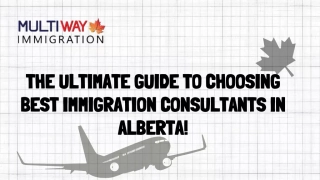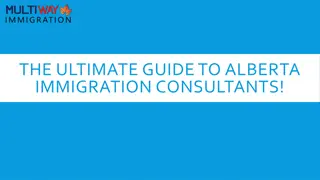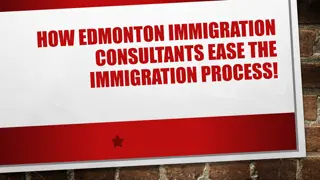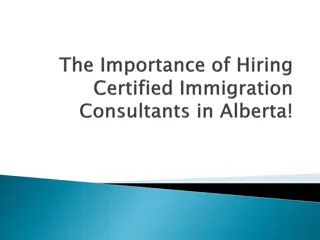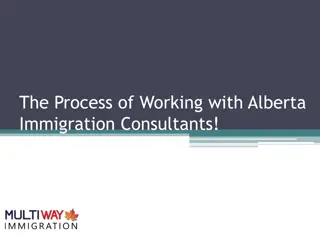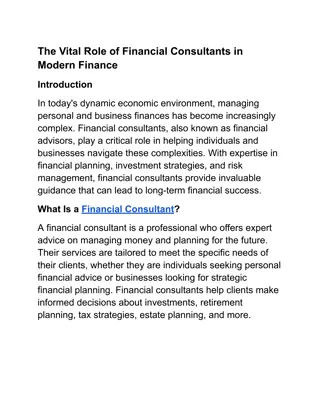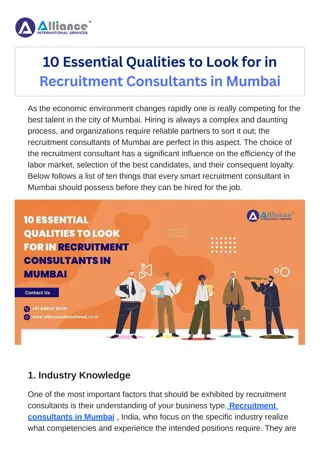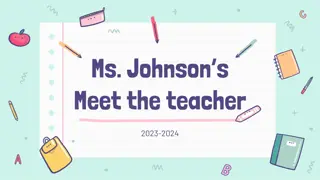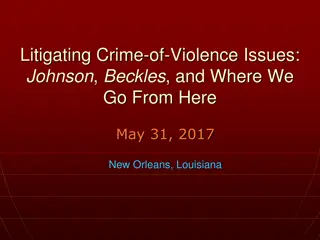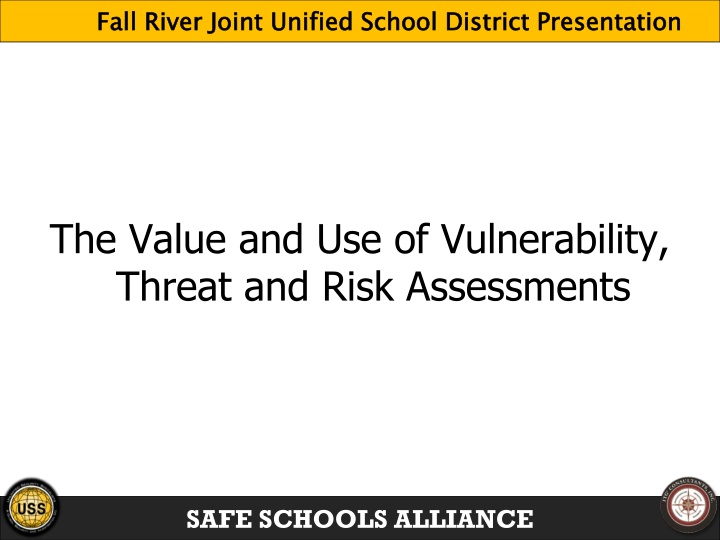
Vulnerability, Threat, and Risk Assessments in School Security
Delve into the importance of vulnerability, threat, and risk assessments for school safety. Uncover how to identify, prevent, and address potential risks and emerge with actionable solutions. Explore real-world cases and expert insights to enhance school security measures effectively.
Download Presentation

Please find below an Image/Link to download the presentation.
The content on the website is provided AS IS for your information and personal use only. It may not be sold, licensed, or shared on other websites without obtaining consent from the author. If you encounter any issues during the download, it is possible that the publisher has removed the file from their server.
You are allowed to download the files provided on this website for personal or commercial use, subject to the condition that they are used lawfully. All files are the property of their respective owners.
The content on the website is provided AS IS for your information and personal use only. It may not be sold, licensed, or shared on other websites without obtaining consent from the author.
E N D
Presentation Transcript
Fall River Joint Unified School District Presentation Fall River Joint Unified School District Presentation The Value and Use of Vulnerability, Threat and Risk Assessments SAFE SCHOOLS ALLIANCE
Objectives Objectives To define and identify the focus of: Vulnerability Assessments Threat Assessments Risk Assessments To facilitate an understanding of which assessment program should be applied to which type of concern To identify characteristics of those who should perform each type of assessment as it relates to the school environment To discuss how the results of each of these assessment types can be transformed into actionable solutions. SAFE SCHOOLS ALLIANCE
Becoming a Victim of a Crime Becoming a Victim of a Crime There are three ways that one can become a victim: 1.Being specifically targeted 2.Being a target of opportunity 3.Being an innocent bystander SAFE SCHOOLS ALLIANCE
Quotable Quote Quotable Quote Planned, Targeted attacks are not confined to those involving prominent public officials and celebrities. Tragically, such attacks are a frequent feature of interpersonal violence in this country today. Cases involving stalking, domestic violence, workplace violence, and bias-motivated criminal activity involve planned - often violent - attacks on intentionally selected targets. -Protective Intelligence & Threat Assessment Investigations, a July 1998 National Institute of Justice Report. SAFE SCHOOLS ALLIANCE
Some Emerging Thoughts Some Emerging Thoughts Active Shooter Scenarios at schools are done at specifically targetedlocations. The perpetrators are commonly using similar modus operandi. At Columbine (April 20, 1999), they used a modus operandi that was similar to the one used by terrorists in Mumbai (November 26 29, 2008) Use of IED and Small Arms Fire BEFOREMumbai happened . 1998 US Secret Service sponsored Exceptional Case Study revealed that among the motivation factors of assassins within the US was a need to achieve notoriety or fame Adam Lanza (Sandy Hook Elementary) is reported to have desired to exceed Anders Breivik s victim totals when he committed his crime. Anders killed 77 people and wounded 319 others in two separate attacks carried out on same day SAFE SCHOOLS ALLIANCE
Conclusions? Conclusions? Most of the perpetrators were people who were authorized to be on the campus they targeted Read: a real access control challenge The perpetrators may have all had post-incident diagnosis of some kind of mental instability. The perpetrators do have intelligence, can plan, may not tell anyone about their plans before they act and typically surprise everyone they know. The perpetrators all have access to the internet Can learn all they want about building IEDs Can learn all they want about possible modus operandi Because they can access this information, they may realize that their act needs to exceed the previous acts in order for them to achieve the level of notoriety or fame they may be seeking It may get worsebefore it gets better SAFE SCHOOLS ALLIANCE
Current Status of Affairs? Current Status of Affairs? There is a huge national dialog going on about all kinds of issues that has arisen in the aftermath of Sandy Hook. Among those topics is school security and how can we, as a nation, keep our children more secure and safe from such violent incidents? Our President, Congress, State Legislatures, School Boards, Teacher Unions, Parent Teacher Associations and community governments at all levels are discussing this and proposing solutions, funding and drafting of new laws. SAFE SCHOOLS ALLIANCE
The Challenge The Challenge There is a common challenge faced by all in this regard. It is diversity. In budget availability In physical plant design In community culture and values In supporting law enforcement infrastructure In supporting medical first responder infrastructure Conflicting laws, regulations, guidelines, codes and policies SAFE SCHOOLS ALLIANCE
So What Does That Mean? So What Does That Mean? It all adds up to mean: There cannot be a one size fits all solution! Each school must benefit from a tailored solution! SAFE SCHOOLS ALLIANCE
There Is No One There Is No One- -Size Size- -Fits Fits- -All Solution All Solution This is a No Cookie Cutter Zone SAFE SCHOOLS ALLIANCE
So How Do You Get There? So How Do You Get There? By starting with the right kinds of assessment! Vulnerability Risk Threat By identifying the issues first, you can begin to design effective solutions that actually effect the issues of concern and do it in a cost-effective manner SAFE SCHOOLS ALLIANCE
What Are These Things? What Are These Things? Vulnerability Assessments Looks at your physical plant AND your policies / procedures to determine if there are items or issues that could be exploited and used against you Risk Assessments Sometimes referred to as An All Hazards approach Typically looks at ALL of the things that could negatively impact your campus or hurt those who may be on it when the event occurs. Includes natural and man-made issues No defined time line something may happen someday Threat Typically looks at things PEOPLE say or do Can have a defined timeline Can include pending natural disasters as well A tornado moves from a RISK to a Threat when it is bearing down on you!!! SAFE SCHOOLS ALLIANCE
What Do We Do Vulnerability Assessments On? What Do We Do Vulnerability Assessments On? Vulnerability Assessments can be conducted on: People Administrators Teachers Students Facilities Administrative Offices Classrooms Gymnasiums Sports fields Dormitories Parking lots Etc Venues Field Trip Locations SAFE SCHOOLS ALLIANCE
What Constitutes Vulnerabilities? What Constitutes Vulnerabilities? Example: Let s say that you have a school that has pretty good polices about keeping the place locked up most of the time. Your main entrance is locked during school hours and visitors have to use a call button and an intercom screening system to get access into the building. Your fire escapes are locked, you can get out but you cannot get in Unless your exterior intercom station is placed where the office operator can see the person using it, or it is supported by CCTV, then how do you know the caller appears to be who they purport to be? SAFE SCHOOLS ALLIANCE
Same Scenario Same Scenario More Vulnerabilities More Vulnerabilities The locks on your fire escape doors are configured correctly according to local fire codes. But local fire codes do not require fire or other alarm activation if they are opened So how do you know if anyone ever opens it? SAFE SCHOOLS ALLIANCE
Same Scenario Same Scenario More Vulnerabilities More Vulnerabilities Closer inspection reveals that the fire escape doors do not have any features that prohibit use of shims to open the door from the outside So how do you know if anyone ever opens it? SAFE SCHOOLS ALLIANCE
Same Scenario Same Scenario More Vulnerabilities More Vulnerabilities Don t know how to bypass locks? Go to YouTube and learn all you want to know SAFE SCHOOLS ALLIANCE
Same Scenario Same Scenario More Vulnerabilities More Vulnerabilities There is no CCTV coverage of the exterior approach to this entrance therefore no record of any one tampering with the door locks to provide undetectable entry at a later time SAFE SCHOOLS ALLIANCE
What Does All This Add Up To? What Does All This Add Up To? Anyone with nefarious intent can approach these entryways at any time without being detected. If they desire, they can surreptitiously open the door and even tape the door open for undetected entry at a later date. This is a vulnerability that can be exploited and used against you. SAFE SCHOOLS ALLIANCE
Why Do Vulnerabilities Matter? Why Do Vulnerabilities Matter? Criminals need three things to commit a crime: 1.Motive 2.Means 3.Opportunity SAFE SCHOOLS ALLIANCE
Why Fix the Vulnerabilities? Why Fix the Vulnerabilities? By removing the vulnerabilities, you reduce the number of things that can be exploited and used against you. You also reduce the opportunities the criminal has to commit the crime SAFE SCHOOLS ALLIANCE
How Do We Remove These Vulnerabilities? How Do We Remove These Vulnerabilities? Installing automatic Alarms Installing anti-shim guards Installing CCTV SAFE SCHOOLS ALLIANCE
We Dont Have A Budget For All Of That!!! We Don t Have A Budget For All Of That!!! Then consider: Having someone periodically check the doors for signs of tampering on a random basis. Let them be seen doing it. Consider using tell tales.. SAFE SCHOOLS ALLIANCE
Who Should Do Vulnerability Assessments? Who Should Do Vulnerability Assessments? Law Enforcement Officers and private sector security professionals who are properly trained in physical security disciplines. They should also have an understanding of the tactical side of the modus operandi issues presented by the perceived or known threats and the potential effects of the perceived or known risks. SAFE SCHOOLS ALLIANCE
What do we do Threat Assessments For? What do we do Threat Assessments For? People Facilities Venues SAFE SCHOOLS ALLIANCE
Threat Assessment Threat Assessment Threat assessment is simply the effort we make in attempting to determine what it is we might be up against. One methodology is to use an investigative process. In this approach, the assessor attempts to answer the 5 W s and the H in formulating the threat assessment. SAFE SCHOOLS ALLIANCE
There Are Different Kinds of Threats There Are Different Kinds of Threats SAFE SCHOOLS ALLIANCE
The Investigative Process The Investigative Process Who? Who are we protecting ourselves from? Friends, foes, fans, students, outsiders or ourselves? Individual or Group? How many of them are there? Do they have a history that can be researched? Do they have backing or support? SAFE SCHOOLS ALLIANCE
The Investigative Process The Investigative Process What? What makes us believe we have a problem? What are we protecting ourselves from? Potential active shooter scenario? Use of IEDs? Fire? Direct Action Campaigns? Disgruntled employees? Terrorism? Or is it just simple prudence? What is their knowledge or skill base? What weapons or other equipment is or may be available to the opposition? What is the potential adversary s motivation? SAFE SCHOOLS ALLIANCE
The Investigative Process The Investigative Process When? When are we likely to have a problem? As students are being transported to and from school? As students are arriving or departing school grounds? During classroom time? During recess time? During lunch time? During sporting or other events? Today, tomorrow, next week or unforeseen? SAFE SCHOOLS ALLIANCE
The Investigative Process The Investigative Process Where? Where will we be when we have the problem? In a school bus? In a classroom? In the cafeteria? In the sports stadium? In the parking lot? In the rest rooms? On a playground? SAFE SCHOOLS ALLIANCE
The Investigative Process The Investigative Process Why? Why do we think we have a problem? Have we received some kind of abhorrent communication? Student report? Internet or social media discovery? Observed behavior? SAFE SCHOOLS ALLIANCE
The Investigative Process The Investigative Process And the BIGGIE - How? How will the attack be carried out? Modus Operandi can t say enough about it! Potential active shooter scenario? Hand guns or Assault Weapons? Individual or group? Use of IEDs? Use of Fire? Direct Action Campaigns? Do they include tactical teams? Embarrassment Activities? SAFE SCHOOLS ALLIANCE
There Are Some Challenges Here There Are Some Challenges Here Because we are looking at people for the most part we have two categories to consider: 1. Groups of Interest 2. Persons of Interest SAFE SCHOOLS ALLIANCE
There Are Some Challenges Here There Are Some Challenges Here Because you are mostly dealing with students (aka Juveniles) and with the potential for metal health issues, two privacy laws impact the ability to conduct threat assessment as it pertains to potential persons of interest: 1. HIPPA The Health Insurance Portability and Accountability Act of 1996. Strictly controls disclosure of personal health information. 2. FERPA Family Educational Rights and Privacy Act. Governs privacy issues relating to student educational records SAFE SCHOOLS ALLIANCE
There Are Some Challenges Here There Are Some Challenges Here HIPPA says information can be released under this circumstance: Serious Threat to Health or Safety. Covered entities may disclose protected health information that they believe is necessary to prevent or lessen a serious and imminent threat to a person or the public, when such disclosure is made to someone they believe can prevent or lessen the threat (including the target of the threat). Covered entities may also disclose to law enforcement if the information is needed to identify or apprehend an escapee or violent criminal. Key words: Imminent threat How is that defined and who defines it? SAFE SCHOOLS ALLIANCE
There Are Some Challenges Here There Are Some Challenges Here So the challenge really is trying to determine who among us is the problem here, how do we drill down to get the specific information and how do we share it with those who have a need to know, especially if it relates to a student / juvenile? In addition other restraints apply: Doctor / Patient confidentiality Clergy / Penitent Spousal privileges Sealed court records SAFE SCHOOLS ALLIANCE
Who Should Do Threat Assessments? Who Should Do Threat Assessments? As it pertains to groups of interest: Law Enforcement Officers and private sector security professionals who understand criminal intelligence issues. They should also have an understanding of the tactical side of the modus operandi issues presented by the perceived or known threats and risks. As it pertains to persons of interest: Forensic Physiatrists and/or Psychologists LEOs and private sector security professionals may be able to contribute SAFE SCHOOLS ALLIANCE
What do we do Risk Assessments On? What do we do Risk Assessments On? People Facilities Venues SAFE SCHOOLS ALLIANCE
What kinds of Things Constitute Risk? What kinds of Things Constitute Risk? As taken from the Pennsylvania Emergency Management Agency s 2009 publication All Hazards School Safety Planning Toolkit: Accidents (all vehicles) Building Collapse Infectious Disease Death / Suicide Energy Shortage Flood Hurricane UncontrolledAnimals Avalanche - Slopes >20% Civil / Political Disorder Pandemics Drought Erosion Heat Wave Landslide WMDs Blights & Infestation HAZMAT Contaminations Dam Failure Earthquake Fire HAZMAT Release Tornado Water Loss Note: Hazards on red background could be caused by a terrorist event SAFE SCHOOLS ALLIANCE
How Does One Weigh These Things? How Does One Weigh These Things? There is NO WAY that we can protect everyone from everything! So how do we weigh these risks and figure out where to start? All things are possible, including threat of Thermonuclear War! If they built your school on the side of a mountain with 25% slope, under a precipice, knowing there is a tendency for it to snow here during the winter fire the zoning board! What is more likely to happen in Pennsylvania Earthquake or tornado? Two aspects to weigh likelihood and severity of impact SAFE SCHOOLS ALLIANCE
Who Should Do Risk Assessments? Who Should Do Risk Assessments? Law Enforcement Officers and private sector security professionals who are properly trained or have experience in risk management. They should also have an understanding of the effects presented by the perceived or known risks. You may also get some assistance from the local Emergency Management Offices. SAFE SCHOOLS ALLIANCE
Buyer Beware Buyer Beware Please note:There are lots of experts out there and various methodologies. Some approaches will pass your common sense test / some will not. SAFE SCHOOLS ALLIANCE
The Carver Method The Carver Method Some are currently using this military Viet Nam era assessment tool in inappropriate applications. CAVER is an acronym that stands for: Criticality - measure of public health and economic impacts of an attack Accessibility ability to physically access and egress from target Recuperability ability of system to recover from an attack Vulnerability ease of accomplishing attack Effect amount of direct loss from an attack as measured by loss in production Recognizability ease of identifying target It was developed by the military to pick the targets they could attack that would cause greatest problems for the enemy It uses a numerical scale SAFE SCHOOLS ALLIANCE
The Carver Method* The Carver Method* Criticality Criteria Scale Loss of over 10,000 lives OR more than $100 Billion. 9-10 Loss of life is between 1,000 10,000 OR loss of between $10 Billion and $100 Billion. 7-8 Loss of life is between 100 and 1000 OR loss of between $1 Billion and $10 Billion 5-6 Loss of life is less than 100 OR loss between 100 Million and $1Billion 3-4 No loss of life OR loss of less than $100 Million 1-2 * As taken from an FDA overview SAFE SCHOOLS ALLIANCE
The Carver Method The Carver Method I submit that in the case of schools, the CARVER method is NOT a suitable or applicable approach. Why? Because the perpetrators of most of the crimes we are talking about today choose their target based upon an emotional attachment rather than the gathering of statistical information and conducting an objective analysis of their intended target listing. If you are Al-Qaeda and want to target a school somewhere in the US, a specific state or a specific city then feel free to use it . SAFE SCHOOLS ALLIANCE
Reporting the Results Reporting the Results High, Medium or Low? OR 2.3, 6.5 or 9.1? OR Prosaic? SAFE SCHOOLS ALLIANCE
Word Scale Word Scale Threat Assessment Perspective Threat Assessment Perspective Negligible indicating that there is very little risk of violence being directed at the individual concerned and/or no credible threat information exists. Low the risk of violence being directed at an individual is a potential that cannot be discounted, but is not considered likely and/or little or no credible threat information exists. Moderate risk of violence being directed at an individual is a potential that cannot be discounted and various factors indicate that some potential exists for the manifestation of violence even though no particular or specific threat may have been identified. High risk of violence being directed at an individual is considered probable and/or a specific threat has been identified which is believed to be credible. Imminent risk of violence being directed at an individual is expected based upon analysis of credible threat information. The incident is expected to manifest itself within a short time frame. SAFE SCHOOLS ALLIANCE
Numerical Scale Approach Numerical Scale Approach Attempts to put a more scientific process to the methodology. Various variables must be given weight. Example: When weighing the potential for danger and considering a person of interest has the means to commit a murder, then would we all agree that knowing if that person owned guns would be a valuable piece of information? Gun Ownership Status Rating Owns no guns Has a CCW but LEO cannot prove gun ownership Has no CCW but is known to own one hunting rifle Known to frequent gun shows, firing ranges and owns 5 handguns Previous conviction of violent offense using handguns / recently purchased handgun from ATF undercover informant 1 2 3 4 5 SAFE SCHOOLS ALLIANCE
Numerical Scale Approach Numerical Scale Approach What says a guy cannot jump from rating 1 to committing murder? Does that guy have to go through all phases in that scale? Is there a tangible difference between the guy that owns one hunting rifle and the guy that owns five handguns? What s the difference between that guy and the one with previous weapon related conviction? Can this scale not be effected by other considerations? Mental illness? Stopping medications? False bravado? Posturing to save face? Does it matter if we say High or Low; or 1 or 5? SAFE SCHOOLS ALLIANCE


